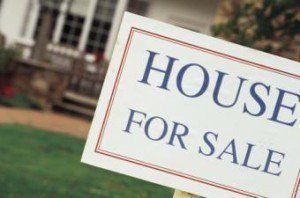 U.S. homeownership rates have been at a 50-year low despite improving local job markets and historically low mortgage rates. Research commissioned by the National Association of Realtors (NAR) said there are five main barriers preventing a large number of individuals from purchasing a home including post-foreclosure stress disorder, mortgage availability, the growing burden of student loan debt, single-family housing affordability, and single-family housing supply shortages.
U.S. homeownership rates have been at a 50-year low despite improving local job markets and historically low mortgage rates. Research commissioned by the National Association of Realtors (NAR) said there are five main barriers preventing a large number of individuals from purchasing a home including post-foreclosure stress disorder, mortgage availability, the growing burden of student loan debt, single-family housing affordability, and single-family housing supply shortages.
Nine million homeowners experienced foreclosure and 8.7 million lost their jobs during the 2008 crisis. According to NAR, programs and workshops aimed at those with long-lasting psychological changes in financial decision-making could help those still gun shy about home buying. NAR also recommends restoring lending requirements in order to normalize credit standards for borrowers with good-to-excellent credit scores. Currently, those borrowers are not getting approved for the same rates they were in 2003, despite their credit score.
To households repaying student loan debt, it is extremely difficult to save for a down payment, qualify for a mortgage, and afford a mortgage payment – especially in areas with high rent and home prices. NAR found in a survey released last year that student loan debt is delaying purchases from millennials and over half expect to be delayed by at least five years. NAR believes policy changes need to be enacted that address soaring tuition costs and make repayment less burdensome. In regards to low affordability, NAR explained that policies need to be enacted to ensure creditworthy young households and minority groups have the opportunity to own a home.
“Single-family home construction plummeted after the recession and is still failing to keep up with demand as cities see increased migration and population as the result of faster job growth,” said Berkley Hass Real Estate Group Chair Ken Rosen. “The insufficient level of homebuilding has created a cumulative deficit of nearly 3.7 million new homes over the last eight years.”
Due to higher prices and lack of property lots, difficulty finding skilled labor, and higher construction costs, housing starts are not increasing to meet the growing demand.
“Low mortgage rates and a healthy job market for college-educated adults should have translated to more home sales and upward movement in the homeownership rate in recent years,” said NAR Chief Economist Lawrence Yun. “Sadly, this has not been the case. Obtaining a mortgage has been tough for those with good credit, savings for a down payment are instead going towards steeper rents and student loans, and first-time buyers are finding that listings in their price range are severely inadequate.”

 theMReport.com Your trusted source for mortgage banking news
theMReport.com Your trusted source for mortgage banking news








